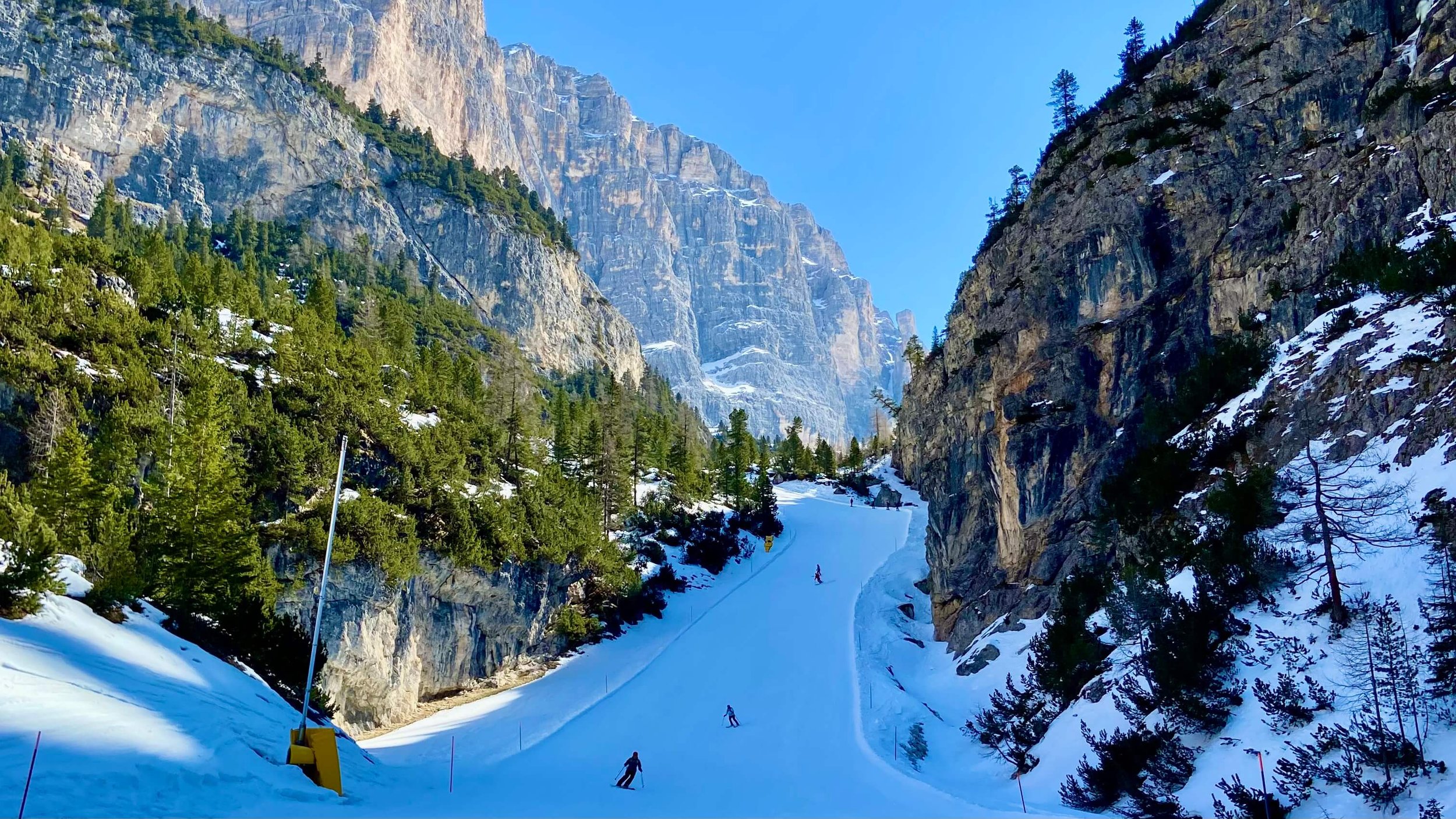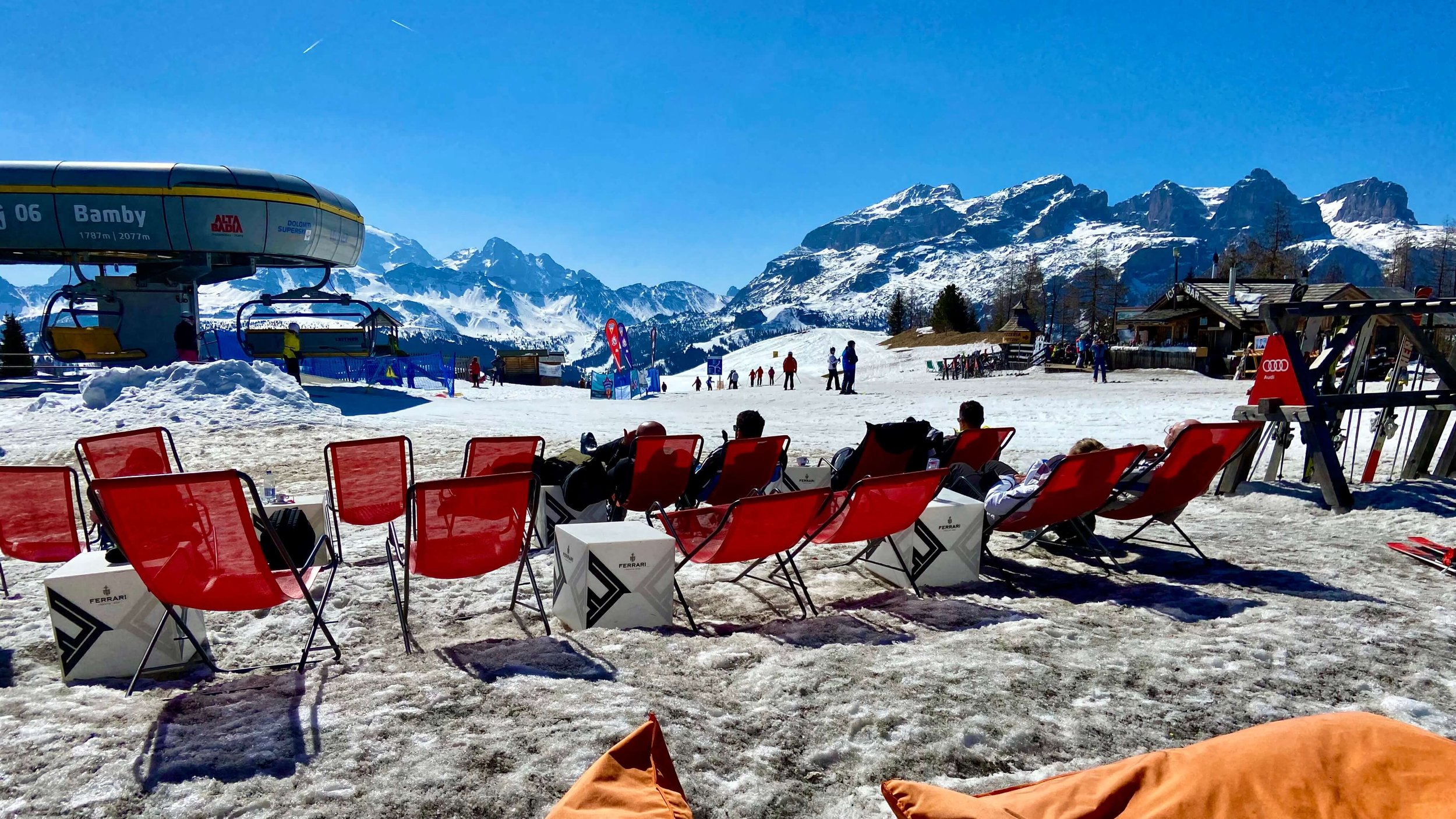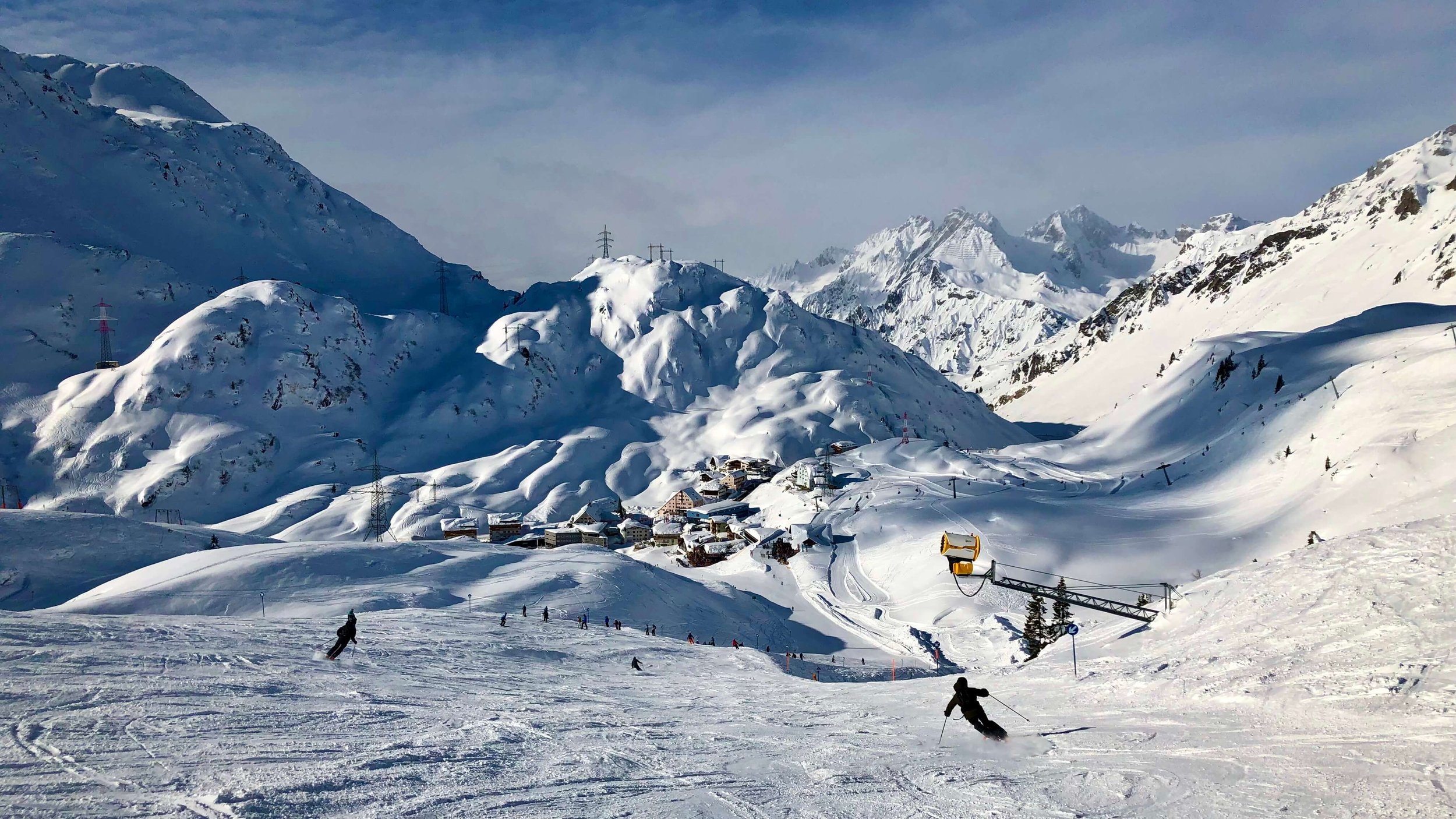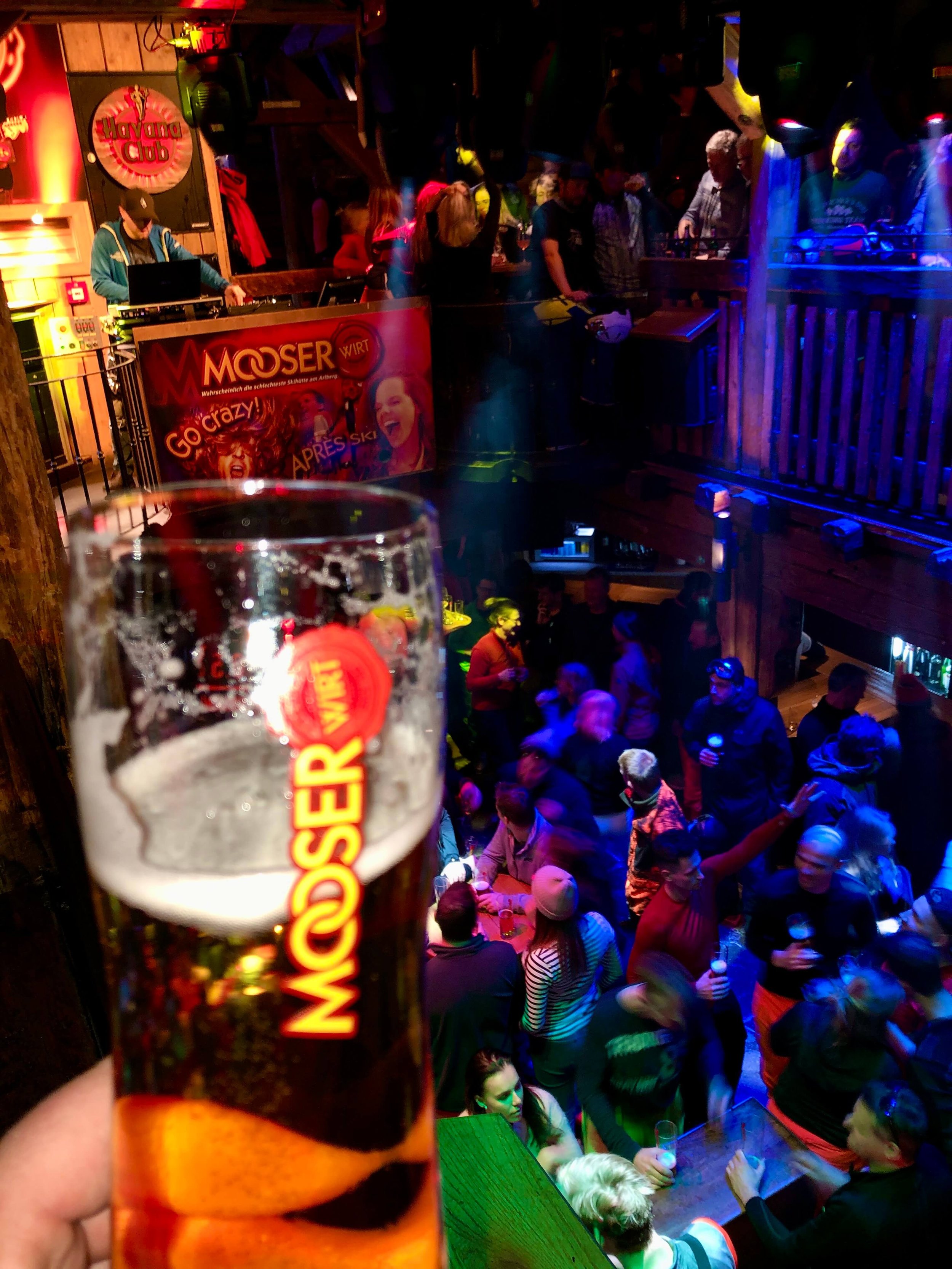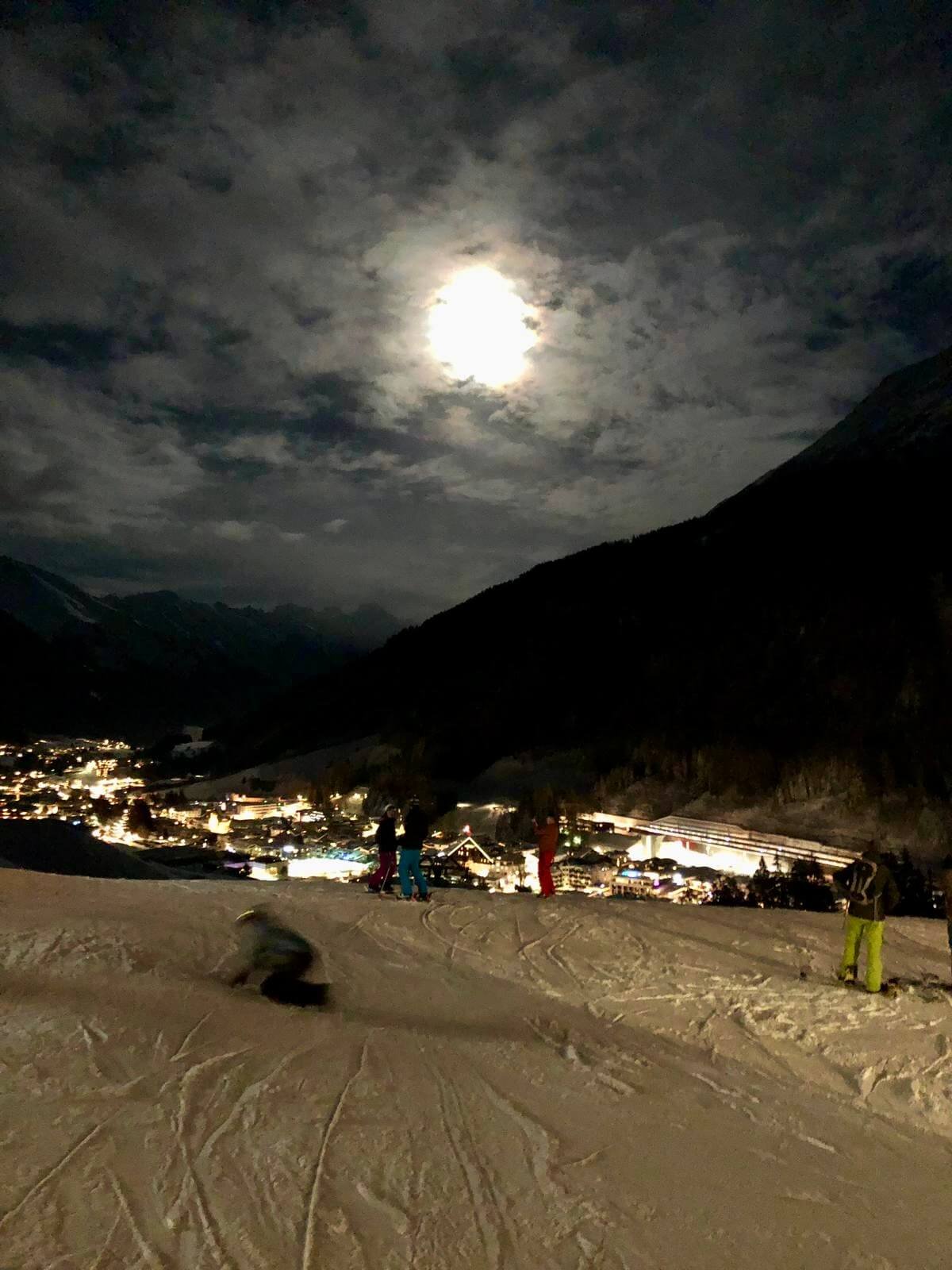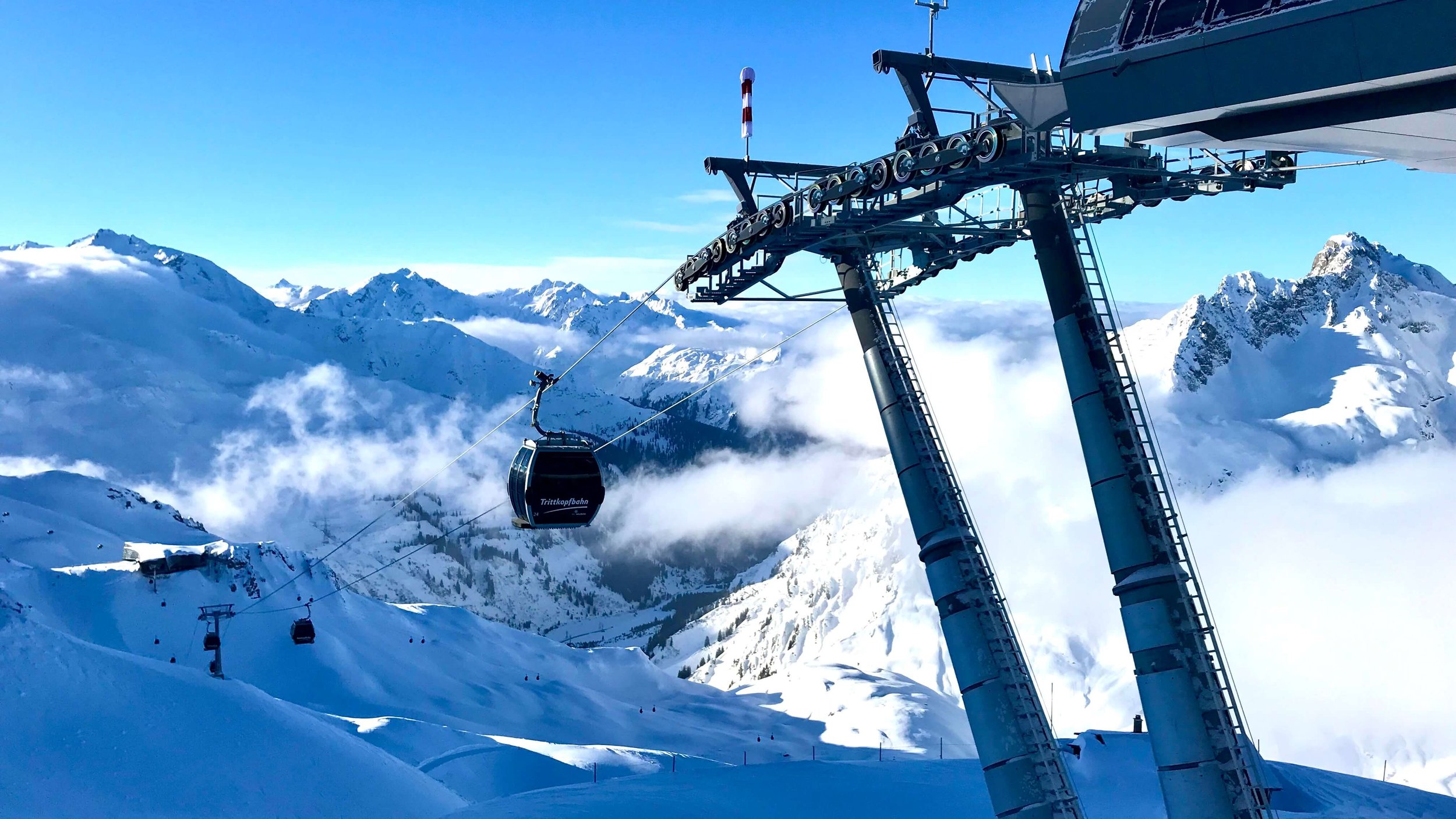Top 5 Best Ski Resorts in Europe - A Guide to Food, Drinks, Fun, Luxury, and Value
INTRODUCTION
Which ski resorts in the European Alps are the best when it comes to eating, drinking, and having fun, while also optimizing for luxury and value? Eat Drink Fun (EDF) has the answer. Our analysis is based on over 40 years of personal experience and insider knowledge. We’ve skied the best resorts. This guide will help you shred the best lines, eat the best food, and drink like the locals.
Hello, World!
TLDR / Bottom Line Up Front (BLUF)
Europe offers skiers and snowboarders over 3,900 resorts. I selected the top 5 based on 13 criteria that cover cuisine, beverages, on-slope fun, and several “X” factors like lodging, snow surety, architecture and style, and value (cost : luxury).
This is NOT an AI generated list thin on details, laden with inaccuracies, or produced by someone who skied only once in Europe.
This top 5 list is based on decades of personal experience skiing what many regard as the best resorts in the Alps. I speak the local languages, understand the local culture, and I’ve done the diligence of eating the schnitzel and fondu, drinking the beer, sekt, and schnapps, dancing in umbrella bars, navigating to the WC down wet staircases in ski boots, and sleeping in the fluffy feather beds. Somebody had to do it.
If you just want the list, here it is from 1-5:
(1) Lech am Arlberg, Austria
(2) St. Anton am Arlberg, Austria
(3) Corvara in Badia, Dolomites, Italy
(4) Kitzbühel, Tirol, Austria, and
(5) Saalbach-Hinterglemm, Salzburg, Austria
Reasonable arguments could be made for any one of these resorts to be number one. They all scored incredibly high. It depends on what you want to prioritize - amount of skiable terrain, quality of luxury services, après ski, etc.
Qualitative and Quantitative Analysis
To quickly understand “why” these resorts, it’s important to understand my analysis.
Again, this list is not an AI generated list.
This Top-5 list is based on my personal experience and a deep understanding of how ski resorts in the Alps have evolved since the 1980s, which is inherently qualitative, combined with a model that scores 13 different criteria to make it a more quantitative comparison. Scores are normalized so that perfection is a 10.0. There are no perfect resorts, but each of these five come close.
These were my key performance measures:
EAT
Unique regional cuisine (distinctive dishes, unique flavors)
Quality and quantity of restaurants (Michelin or Gault & Millau recognized; diversity, atmosphere, and quality of restaurants on the mountain and in the village)
Sustainable, locally sourced food (DOP, DOC, organic products; support to local farms and producers)
DRINK
Local/regional wines (uniqueness of local wines; diversity of international options; quality of wine lists)
Local/regional beers (quality of mass produced beers; availability of microbrews)
Local/regional spirits (unique local spirit tradition; specialized mixed drinks)
FUN
Quantity, quality, and diversity of terrain (size of resort on single ski pass; quality of grooming; breadth of terrain and skill options)
Modern ski infrastructure (age of infrastructure; speed of lifts; line size; heated seats; protective bubbles; free local public transport options)
Après ski scene (famous venues; length and size of après parties; atmosphere; price; quality of nightlife)
X-FACTORS
Lodging options (diversity from one to five+stars; updated/renovated properties; ease of booking; cost)
Architecture and style (unique local architecture; quality and beauty of resort and buildings; atmosphere; amount of commercialism)
Snow surety (average snow depth; length of ski season)
Value (cost : luxury; approach to hospitality; diversity of activities, even for non-skiers)
With these categories in mind, let’s dive into the top 5 ski resorts in Europe, your guide for the best food, drinks, fun, luxury, and value.
#5 - Saalbach-Hinterglemm
Total score: 9.15/10
Taking in the exhilarating view over Saalbach. Copyright (c) Eat Drink Fun LLC.
Overview
Saalbach-Hinterglemm is a wonderful all around resort with broad appeal for families - specifically in quieter Hinterglemm - and skiers and riders who like diverse terrain and great après ski - the big party fun is in Saalbach. In short, Saalbach-Hinterglemm is a solid choice if you’re trying to please everyone.
Basic Statistics for Saalbach-Hinterglemm
270 km / 167 miles of groomed terrain (total)
140 km / 86 miles of easy blue runs. In Europe, blue runs are the easiest (green is usually used in North America).
112 km / 69 miles of red runs - which are medium difficulty
18 km / 11 miles of black runs - black runs are the most difficult groomed runs. If you see an orange diamond with black border, this is usually an ungroomed ski trail that is still patrolled at the end of the day - you should be a high intermediate or expert skier.
70 lifts (29 modern gondolas, 21 chair lifts, 20 tow lifts)
Hot Tip
Few European black runs have moguls, at least not during the first part of the day. If moguls form, they are grooved naturally. The black designation usually correlates to steepness, and most black pistes are still groomed. If you want to find bumps, there are probably lots of them next to the black slopes - just go “off-piste” next to the black runs and enjoy.
Pro
Modern Ski Infrastructure: 10/10
60 beautiful and quaint ski huts on the mountain slopes. They often boast amazing views, large sun terraces, warm fireplaces, cozy nooks to drink glühwein (mulled wine) or jägertee (hunters tea - it’s not really tea).
The 70 modern detachable chairlifts and gondolas connect you to numerous snowparks, funslopes, snow trails, floodlight slopes for night skiing, and filmed ski tracks, speed runs & race courses that you can activate with your RFID skipass. (Note: while RFID ski passes are still a novelty in North America, they have been standard issue in Austria since the late 1990s.)
If you buy the extended ALPIN CARD, your ski pass for the regular Skicircus Saalbach Hinterglemm Leogang and Fieberbrunn is extended to the Schmittenhöhe in Zell am See and the Kitzsteinhorn in Kaprun. This expands your available terrain to 408 km / 253 miles of slopes and 121 lifts. As a frame of reference Vail, Colorado operates only 31 lifts.
Advert for Stroh 160 proof (80% ABV) rum outside Bauer’s Ski Alm, Saalbach, Austria. Copyright (c) Eat Drink Fun LLC.
Après Ski 10/10
Saalbach plays host to one of the best après ski scenes in the world. I’ve survived several “boys weekends” in Saalbach, and the debauchery usually devolves in the following downhill progression:
2pm: hang out in the sun at the family-run Turmfalke umbrella bar with a great view over Saalbach. Tell Josef that Kris and Eat Drink Fun sent you.
4pm: join the insane après party at Hinterhag Alm.
8pm: ski down in the dark to Bauer's Schi Alm to hang your jacket and helmet in the rafters and dance your face off. There is a good sausage stand outside Bauer’s, to mitigate starvation. Regrettably, there might be a sausage party inside, but it depends on guests that week.
11pm to close: two great options include stumbling across the street to the Off Piste Bar or across the village to the basement hangout Underbar, a favorite among our Danish and other Scandinavian friends. Both bars offer cozy spaces with talented live musicians.
Excellent news if you’re not an après ski partier. The adjacent village of Hinterglemm - 8 minutes away by taxi - is quieter, more posh, and very family friendly. Hinterglemm also offers a beautiful night skiing run, as well as a floodlit 1.8 mule / 3 km toboggan run, Reiterkogel. In fact there are five toboggan runs spread across the resort. If you are stuck in Hinterglemm and you still want an good après umbrella bar (schirmbar), check out Goaßstaal (the Goat Stall).
Con
Wines: 8/10
Cons are few and far between, but if you demand fine international wines from France, Italy, and Spain, your options may be limited here. The great news is that Austrian wines are delicious. Try a glass of Grüner Veltliener (aka “Groovy”) while relaxing in a beach chair under the sun. Groovy is the national white grape of Austria. For reds, try an Austrian Pinot Noir or a Zweigelt - you’ll probably love them. If you want a more full bodied red wine, try a Blaufränkisch, which has deep sour cherry, plumb, black pepper, and chocolate notes.
Snow Surety: 8/10
Unfortunately, I have skied Saalbach in early March and found heavy corn snow on descents into the valley. Not every year, but twice in the last five yers. The village of Saalbach sits at only 1,000 meters / 3,280 feet. Consequently, warmer and shorter winters may pose a future challenge for Saalbach. Fortunately, they have excellent snowmaking capabilities.
#4 Kitzbühel
Total score: 9.23/10
Overview
Kitzbuhel has been a legendary ski mecca for snow and fun since recreational Alpine skiing began. It is home to the Hahnenkammrennen each January, which is the world’s fastest and most dangerous downhill ski race on the World Cup circuit. You can ski the Streif (in German, the “streak”) in all its ungroomed glory after race day, but the vast majority of the slopes in “Glitzy Kitz” are for beginners and intermediates.
It’s called “Glitzy Kitz” because it has always been popular with wealthy guests in both summer and winter. Kitzbühel is the Austrian relative of Courchevel, St. Moritz, and Gstaad - think plenty of people carrying small dogs while wearing fur. This is where the Münich élite come to ski.
Fortunately, people and families with normal incomes are also welcome and can enjoy the high life. In fact, this is where I learned to ski as a child, and the Rote Teufel Ski School (the Red Devils), founded in 1926, sets the gold standard for teaching proper, Tirolean ski technique.
Basic Statistics for Kitzbühel
234 km / 145 miles of groomed terrain (total for Kitzbühel-Kirchberg, but access to more)
45 easy/blue runs for 102 km / 63 miles.
31 intermediate/red runs for 66 km / 41 miles
16 black/expert runs for 20 km / 13 miles
57 lifts (12 modern gondolas, 27 chair lifts, 10 tow lifts, 8 magic carpets)
Two men skiing the famous “Streif” (Hahnenkamm World Cup downhill), and taking in the view over Kitzbühel, Austria. Copyright (c) Eat Drink Fun LLC.
Pro
Ski Infrastructure: 10/10
Kitzbühel is part of the larger Kitzbüheler Alpen ski region, which offers 234 km / 145 miles of groomed terrain. 45% are easy slopes, 31% are intermediate, 16% are expert, and there are 46 km / 29 miles of “freeride routes.” Kitzbuehel recently invested 23 million Euros in further modernizing its fleet of lifts and gondolas. Almost all the chairs are high speed detachable lifts with heated seats. Some are even shaped like Recaro bucket racing seats.
You can add an additional 176 miles / 284 km of terrain by skiing to the adjacent SkiWelt Wilder-Kaiser / Brixental ski region.
State-of-the-art 10-person Fleckalmbahn gondola. Heated racing seats. Copyright (c) 2022 Eat Drink Fun LLC.
Perfect scores in the Eat and Drink categories.
If you like to eat and drink well and enjoy nice things, Kitzbühel is nirvana.
Kitzbühel has been a destination for winter vacationers for over a century. International clientele can enjoy top wines from anywhere in the world in addition to superb Austrian wines made from Zweigelt, Blaufränkisch, and Grüner Veltliener.
The Harisch Hotels Group dominates the luxury market in Kitzbühel, with an illustrious portfolio that includes the Wiesses Rössl, Schwarzer Adler, Schloss Lebenberg, and Goldener Greif. They also manage outstanding restaurants including the Restaurant Greif, Gasthaus Chizzo, and Berggasthof Sonnenbühel. Sonnenbühel is an absolute must for an amazing Italian lunch on the mountain.
Architecture / Style: 10/10
Kitzbühel is a charming Tirolean village nestled in a gentle valley with skiing on both sides. The medieval center is recognizable for its beautiful multicolored stone buildings and chalets, cobblestone streets, and upscale shopping. Kitz has grown in size in recent decades, offering multiple golf courses and a professional tennis tournament in the summer. Still, the architecture and style remain a refined blend of traditional chalets with modern technology and comforts.
Con
Snow Surety: 6/10
The village of Kitsbúhel lies at a mere 2,624 feet / 800m above sea level. This is low for the Alps, and given warming temperatures in recent winters, snow depth can become an issue. In some years it threatens the Hahnenkamm race, which is held in mid-to-late January.
Fortunately, Kitzbühel offers many other activities for non-skiers, even if the snow is not ideal. Spas, shopping, dining, art, festivals, and parties abound.
Après Ski 7/10
Aside from race-days, Kitzbühel does not pump as much après ski volume as other resorts in Austria. The celebrations tend to be more posh and elevated.
That said, the Londoner Pub (established 1976) is a legendary venue that must be experienced. The Londoner always hosts the Hahnenkamm race winner. Festivities usually warm up after dinner … and it goes late.
Other venues to seek out include Schi-Alm, KitznBar, Huberbrau Stuberl, Pavillion, and if you need a club, there’s Club Take Five (note: helicopter transfers and bottle of Château Lafite Rothschild available … ahem).
#3 Corvara in Badia
Total score: 9.31/10
Skiing the unique “Hidden Valley” run which ends in a horse tow. Copyright (c) 2022 Eat Drink Fun LLC.
Overview
The Dolomite mountains in Northern Italy have been designated by UNESCO as a World Heritage area for their beauty. That should set the scene for how amazing it feels to ski in this region.
These Alps are simply unlike anything else in Austria, Switzerland, or France.
Now combine that with a unique mix of Italian, Austrian, and local Ladin cuisine, tipples, hospitality, and flair, and you have yourself a perfect recipe for an unforgettable ski holiday.
For the remaining top 3 resorts, including Corvara, we can rest assured that maximum points are awarded for unique regional cruising, quality of restaurants, locally sourced products, and delicious regional wines, beers, and spirits.
Additionally, the quality and quantity of terrain and modern ski infrastructure are among the best in the world.
Finally, these top three resorts demonstrate exceptional architectural style, diverse lodging options, excellent snow surety, and the best value - that is, the amount of luxury you can enjoy for a reasonable price.
Basic Statistics for Corvara in Badia (Dolomites)
130 km / 80 miles of groomed terrain (in Alta Badia alone; enlarge this to 1,200 km / 746 miles when considering the entire Dolomiti Super Ski region)
Easy/blue runs: 74 km / 45 miles.
Intermediate/red runs: 47 km / 30 miles
Black/expert runs: 9 km / 5 miles
53 lifts (1 train, 11 gondolas, 30 chair lifts, 11 tow lifts)
Sun loungers are all over the mountains around the Sella Ronda. Copyright (c) 2022 Eat Drink Fun LLC.
Pro
Quantity and Quality of Terrain 10/10
Two words: Sella Ronda. Corvara offers direct access to the largest ski circuit in the world. It’s a 26 mile / 43 km loop around the enormous Sella massif that skiers can execute in either direction, clockwise or counterclockwise. It takes at least half a day, but it’s also nice to take your time.
The Sella Ronda is part of the Dolomiti Super Ski regional pass, which is the largest ski region in the world. It includes renowned resorts like Cortina d’Ampezzo, Kronplatz, and the Drei Zinnen (Three Kings).
IN TOTAL: A single ski pass gives you access to 12 resorts, over 1,200 km / 745 miles of groomed slopes and 450 lifts, all on a single ski pass for $80 / 75 Euro per day in the high season.
The Alta Badia Wine Ski Safari takes place every March. Copyright (c) 2022 Eat Drink Fun LLC.
Food and Drink 10/10
As to food and drink, the Guide Michelin recognizes 51 restaurants in the Dolomite ski area. That includes one three-star, 10 one-star, and five bib-gourmand. The number of high quality restaurants to people is simply absurd for a ski region.
Some of my favorite places include Rifugio Col Alt for lunch on the slopes, the Adler Keller for traditional Ladin dishes, Stüa de Michil for a fine dinner, and l’Osti for trendy and delicious. Furthermore, the mountain huts - called Rifugios in Italy - are beautiful and serve amazing food. Try Rifugio Piz Arlara, Rifugio Ütia Bioch, Las Vegas.
Visitors must try regional specialities like cheese or spinach dumplings, barley soup, Südtirol speck (dried pork - think prosciutto but smokier), casunziei (ravioli stuffed with pumpkin or spinach), and polenta.
You’re also in Alto Adige, which is the northernmost wine making region in Italy. The wines are as beautiful as the mountains, benefitting from warm sunny growing days, cool nights, incredible soils, and significant elevation.
For more information, check out our podcast on the annual Wine Ski Safari in Alta Badia.
Finally, instead of mulled wine (glühwein), which is a typical beverage for a ski break, try the local speciality of hot spiked egg liquor with whipped cream. It’s called a Bombardino and it will transform your concept of egg nog.
Südtiroler speck, local cheese, and mushrooms - perfect with local wines from Alto Adige. Copyright (c) 2022 Eat Drink Fun LLC.
Lodging Options 10/10
In short, there are so many options and all of them are of excellent quality. Corvara and its neighboring villages offer a wide range of accommodations, from luxury hotels - such as Hotel La Perla, a member of Leading Hotels of the World - to beautiful recently renovated apartments for a very reasonable price. From 2021-2022 my family and I rented three sleek, trendy apartments for a little over 400 Euro for the entire week. Not per night. An apartment with kitchen, living area, dining area, and balconies. Check out the Residence Ciasa Crazzolara in La Villa.
Con
Aprés Ski 7/10
Corvara is not known as an after ski destination. It is more situated for family vacations and couples, with its gentle blue pistes flowing gracefully into the village, which is drenched in abundant sunlight after January.
That said, if you need to shake your booty, there are three options: (1) Biraria L’Murin near the base of the Col Alto lift; (2) Club Moritzino at the top of the Piz La Ila lift (Gran Risa World Cup route); and Skihütte Las Vegas, which hosts a special après ski party for hearty people who skin up from San Cassiano and then ski back down in the dark afterwards.
#2 St. Anton am Arlberg
Total Score: 9.69/10
Skiing to St. Anton. Copyright (c) 2o19 Eat Drink Fun LLC.
Overview
St. Anton am Arlberg is the alpine source of a free, endless, and natural supply of dopamine and serotonin. It’s a skier’s ski resort - heaven for serious powder hounds seeking a challenge and then ending the day with a group of like-minded revelers in an epic après ski party.
While having a reputation as the epicenter of skiborne fun, St. Anton also offers guests an abundance of luxury and premium comforts, including a very nice public wellness center, a cute pedestrian-friendly village, and optimal convenience by either rail or car.
Basic Statistics for St. Anton am Arlberg
305 km / 188 miles of groomed terrain
Easy/blue runs: 130 km / 81 miles
Intermediate/red runs: 122 km / 76 miles
Black/expert: 51 km / 32 miles
Freeride routes: 200 km / 124 miles
85 ultra modern lifts (5 large gondolas, 11 10-person gondolas, 44 chair lifts, 25 tow lifts)
Skiing from St. Anton to St. Christoph for lunch. Copyright (c) 2019 Eat Drink Fun LLC.
Pro
Quantity and Quality of Terrain 10/10
St. Anton is not just for experts - I’m a bit sick of hearing this inaccurate experts only trope because the terrain is extensive and varied. As part of the larger Arlberg ski region, guests have access to over 305 km of daily-groomed pistes and about 200 km of off-piste skiing. The terrain has options suitable for all skill levels.
Beginners can find suitable areas around Nasserein and Gampen
Intermediate skiers will appreciate the abundance of red pistes and challenging blues.
Advanced skiers can enjoy several black runs. A highlight is the World Cup GS slope Kandahar - at the top of Kapall, follow Black 41 to Black 34. It rips.
For our freestyle brothers and sisters, Stanton Park on Rendl offers rails, boxes, and kickers - it’s ranked in the top 3 in Europe. Additionally, the 52-mile / 85-km-long Run of Fame provides a long-distance round trip across the entire Arlberg ski region, from St. Anton to Warth and back (it’s a full day).
Finally, the off-piste skiing opportunities and incredible. It’s worth going with a local guide to find unique runs you’ll remember for a lifetime.
Overlooking the DJ booth and dance floor at the Mooserwirt in St. Anton, Austria. Copyright (c) 2019 Eat Drink Fun LLC.
The World’s Best Après Ski 11/10
St. Anton is legendary for parties at the end of your ski day. And they keep it classy. There were a few years in the 90s and early 00s when busloads of Scandinavians (starved of affordable alcohol by their own governments) descended on Austria and treated the country as their collective frat house. Fortunately, those days are over, thanks to careful remediation by the people of St. Anton.
Today, the après scene in St. Anton remains at the top of charts, offering substantial diversity based on your mood. Guests can chill in the sun, hang out at umbrella bars, enjoy great live music on the mountain or in pubs, and of course, dance and sing to their hearts’ content in the larger après ski venues.
On mountain highlights (ski down after dark at your own risk - no really, nobody to sue if you hurt yourself):
Mooserwirt. If you hit one party on a ski holiday, this should be it. Legendary DJ Gerhard devised the perfect après ski set list and formula since 1989, which is now carried on by his son. Listen to the EDF podcast with founder Eugen Scalet for a deep dive. Their motto is “Probably the “baddest” Après Ski Bar in the Arlberg Mountains”. In truth, it’s the best après party on planet Earth.
Heustadl (hay barn). Great for chilling in the afternoon sun, live performances, and après DJ.
Sennhütte. The original. Likely the first farmer to convert his barn into an après joint for skiers. Traditional vibes, live music, older crowd.
The Krazy Kanguruh. The KK has been helping generations of skiers unwind since 1965. Since 2009 it’s been owned by local world and Olympic slalom champion Mario Matt.
Taps. Next door to the KK. Great sunny scene and DJ. Legit nachos, BTW.
Griabli. A hidden secret. Across the narrow piste from the Mooserwirt. Great for lunch and staying until the live rock and blues begin.
Valley après highlights:
Basecamp. Great meeting point when you finally reach the bottom. Good food and wine selection too.
Murrmel Bar. Fun scene, with DJ upstairs and a great basement bar with live music. Try not to dance so hard you tear a ligament (Jer)
Fang House. Convenient if you find yourself at the base of the Nasserein lift.
Skiing down to St. Anton from the Mooserwirt at night. Copyright (c) 2019 Eat Drink Fun LLC.
Con
Restaurants (Quantity) 9/10
If I’m obligated to list anything, it would be that St. Anton offers fewer celebrated restaurants, though quality remains extraordinary.
St. Anton may not yet have the restaurant caché enjoyed by other luxury resorts, but the elegance and sophistication of the food will impress you.
For an incredible dining experience, consider the following:
The Museum Restaurant. Gorgeous traditional mountain residence converted into a fine dining restaurant. Superb.
Alpin Gourmet Stube. Elegant. Trendy. Creative food.
Hotel Tannenhof. Five star hotel with Gault Milleu recognized kitchen
Raffl’s Stube. Exceptional hotel restaurant at the St. Antoner Hof.
Restaurant Ooben in the Mooserhotel. Want to follow up après ski with a shower, sauna, and five-star meal with a bottle of Chateau Cheval Blanc? It’s all possible at the Mooserhotel.
Thony’s Barn. Traditional Tyrolean dishes.
Don’t worry if you’re not into fine dining. You’ll be blown away by the exceptional quality of the food at huts on the mountain.
#1 Lech am Arlberg
Total Score: 9.85/10
Alte Kirche St. Nikolaus, Lech am Arlberg, Austria. Copyright (c) 2023 Eat Drink Fun LLC.
Overview
Humans are not perfect, nor are their creations. But I think the residents of Lech am Arlberg have come closer than anyone to creating the perfect ski village.
Unique regional cuisine, local products, and outstanding restaurants; exceptional Austrian and international wines, the best German beers and Austrian micro-brews, and unique local spirits. If you visit, you must try the Rote Williams produced by the Ski Club Arlberg.
Gorgeous, chic alpine architecture, with excellent lodging options that are affordable for normal guests as well as ultra luxurious private chalets for those with deep pockets. Finally, all of these things are backed by a solid snow guarantee, with the Lech’s elevation at 4,593 ft / 1,400 m. This is all before you step into your ski boots.
Lech may be one of the most exclusive resorts in Austria, but it remains very approachable for any skier. Hospitality is personalized and generous. Families and small groups are cherished, but hardcore powderheads who want to shred serious off-piste glades and back-country slopes will be delighted. If you are craving a big après party, you can traverse over to St. Anton and take a bus or cab back. And during some events - like “The Night” following the White Ring Race, Lech turns up the volume itself.
Lech simply has it all. It is nearly perfect.
Basic Statistics for Lech am Arlberg
305 km / 188 miles of groomed terrain
Easy/blue runs: 130 km / 81 miles
Intermediate/red runs: 122 km / 76 miles
Black/expert: 51 km / 32 miles
Freeride routes: 200 km / 124 miles
85 ultra modern lifts (5 large gondolas, 11 10-person gondolas, 44 chair lifts, 25 tow lifts)
Beautiful blue runs from the top of the Rufikopf mountain towards the neighboring village of Zürs, Austria. Copyright (c) 2023 Eat Drink Fun LLC.
Pro
Quantity and Quality of Terrain 10/10
Lech is a key member of the Arlberg ski region. Slope grooming and preparation is better than anywhere I’ve ever skied. Beginners have their own practice area, and almost the entire groomed area can be accessed by beginners and low intermediate skiers. At the same time, advanced skiers love the challenging red and easy, wide black slopes, and experts have endless off-piste opportunities.
Skiers and riders can explore the following highlights in the region:
The Run of Fame: a full-day ski loop that stretches across the Arlberg region from Warth to St. Anton (6 hours). 53 miles / 85 km in length, 3 high alpine mountain passes, with a change in vertical elevation of 59,000 feet / 18,000 meters.
The White Ring (Der Weisse Ring): A 13.6 mile / 22 km loop with over 3.4 miles / 5,500 meters change in vertical elevation throughout the circuit.
The Long Train (Die Lange Zug): a 3 mile / 4.7 km ski run from the top of the Rüfikopf mountain back to Lech, which incorporates one of the steepest slopes in the Alps with an 80 percent grade for a nice beautiful portion of it. (https://youtu.be/ipiAv7g8qtc?si=uWKJDVkTU5d-ezrO)
Tritt-Alpe gondola, part of the new Flexenbahn infrastructure that connects Zürs to St. Anton. Copyright (c) 2023 Eat Drink Fun LLC.
Modern Ski Infrastructure 10/10
The best life infrastructure I’ve ever skied, hands down. It seems every year a brand new lift is brought into service or an old one is replaced. Many chairlifts have cushy, heated seats. Nearly all of them have protective plastic bubbles to protect you from falling snow. The gondolas are sleek, modern eight-to-ten-person high speed bubbles with floor to ceiling glass to admire the Arlberg mountains. You’ll also find novel technology, where gondolas and chair lifts share the same cables in some parts. Terrain parks, jumps, ski race courses, panoramic selfie spots - it’s all here.
Being a small village, everything in town is walkable. But ski buses are both frequent and complementary if you don’t want to walk. Busses will also connect you to lift infrastructure in Zürs and near St. Anton. And if you want to stay a bit later at Aprés ski, buses or cabs will take you back to Lech (fees apply for these).
Rud-Alpe chalet restaurant terrace on a sunny day above Lech am Arlberg, Austria. Copyright (c) 2023 Eat Drink Fun LLC.
Food and Beverages 10/10
In Lech, exceptional cuisine is everywhere, both on the mountain and in the village. Many hotels have excellent wine cellars with skilled sommeliers to assist guests.
Recommended wine and food events include the following:
Arlberg Vineyard (Arlberg Weinberg): a 10-day winter wine and food festival that takes place in early December each year. The Arlberg Weinberg offers special wine tasting opportunities with renown experts, master classes for wine nerds and professionals, gala dinners, and other opportunities to enjoy local and international cuisine and wines.
The Delicious Ring (Köstlicher Ring): Each December, four top hotels host a gourmet food safari featuring two wineries at each location. Hotel Post, Hotel Arlberg, Romantik Hotel “Die Krone von Lech” and Hotel Der Berghof.
Beautiful Kriegeralp hut above Lech am Arlberg. Copyright (c) 2023 Eat Drink Fun LLC.
Architectural Style & Lodging Options 10/10
The architectural design in Lech is unparalleled. The chalets are charming and beautiful, combining traditional features with every conceivable modern convenience and comfort. You will not find any ugly buildings or mega-hotels (I’m looking at you Switzerland and France).
The lack of big ski resort commercialism distinguishes Lech from most other famous ski resorts in the Alps. There are no chains here, except for one Spar grocery store and two Intersport sport shops. Even the modern lift infrastructure is owned by groups of local families, not by large international investors.
While European and Middle Eastern royalty are comfortable in five-star hotels and private luxury chalets, normal people can still enjoy reasonable prices at 2, 3, and 4 star pensions, hotels, and apartments. Quality is exceptionally high throughout the range of lodging options, and you will spend 50% of what you would for a ho-hum chain hotel room in a North American ski resort.
Lech has excellent snow surety. The village sits at 1,450 meters / 4,757 ft. Copyright (c) 2023 Eat Drink Fun LLC.
Con
Arés Ski
The only small deficiency with Lech is its aprés ski scene. The best aprés is in St. Anton, which is reachable from Lech. Just make sure you jump on the last bus to Lech at around 7:00 pm or split a cab with a larger group.
That said, the aprés vibe in Lech may be interesting for people seeking a throwback experience - perhaps to what aprés ski resembled in the 1960s and 70s. By this I mean most people belly up to a hotel’s outdoor bar under a heat lamp, enjoy music at a normal volume, and take in the final rays of sun before it dips behind the Omeshorn mountain. For traditional aprés, check out the Hotel Krone Aprés Bar, Hotel Tannbergerhof, and the Schneggarei, which are centrally located near the base of the main chairlift lift.
For nightlife, check out The Cottage Pub under the Hotel Tannbergerhof, Die Vernissage, and the K-Club, all of which open at 10pm.
The exception to Lech’s normally chill aprés ski occurs during special events, like the White Ring Race; specifically, the evening party known as “The Night” (Die Nacht). For the brave, you can start with a huge party at Balmalp on top of the mountain, then ski down in the dark using a head torch to the middle station at Schlegelkopf, and end the evening at Rud-Alpe, just a few meters above the village. I can’t recommend this highly enough.
Poster highlighting the three main party venues for “Die Nacht”, the celebrations that follow the White Ring Race. Copyright (c) 2023 Eat Drink Fun LLC.
CONCLUSION
Austria dominates the top-5 list. Are you surprised? Some may be jilted that Le 3 Valées in France, or Verbier, Zermatt, and other famous Swiss resorts didn’t make it. Whether you agree or not, I’d like to hear from you.
In my experience, Saalbach, Kitzbühel, Corvara, St. Anton, and Lech offer the best modern ski infrastructure, legendary après ski parties, truly unique and exceptional cuisine, wines, and spirits, and an overall sense of luxury and comfort for price that are unmatched anywhere else.
While several resorts in France and Switzerland also score well, none of them can crack the top-5 in Europe. The Swiss are blessed with extraordinarily beautiful mountains, but they lag in modern ski infrastructure, value, and the ability to smile at non-Swiss people. The French offer immense and beautiful terrain, and even fun après ski if you like cabaret, champagne showers, and VIP fishbowls (a la the La Folie Douce après chain), but several French “ski stations” are unfortunately grotesque (looking at you Tignes, Plagne, and Flaine). What do you think?
EDF “ski sommelier” escorting a group of thirsty ladies around Lech am Arlberg. Copyright (c) 2023 Eat Drink Fun LLC.
Offer
If you want some assistance with this process, Eat Drink Fun is here to help. With Custom Adventures, we’ll help you optimize your group trip or corporate event. During EDF’s ski residencies, we’ll personally escort you to the best locations and experiences on the mountain.
EDF is not a travel agent. We provide consultation and educational services, curated by a ski sommelier with deep personal knowledge and experience in the region. You control your transportation and reservations; EDF provides critical insight, guidance, and translations for English-speaking guests. Eat at the best local restaurants, order the right local wines and unique beverages, dance and party at the best après ski venues, and, of course, ski and ride the best slopes with the most epic views. In short, optimize your short and valuable time in the Alps.
